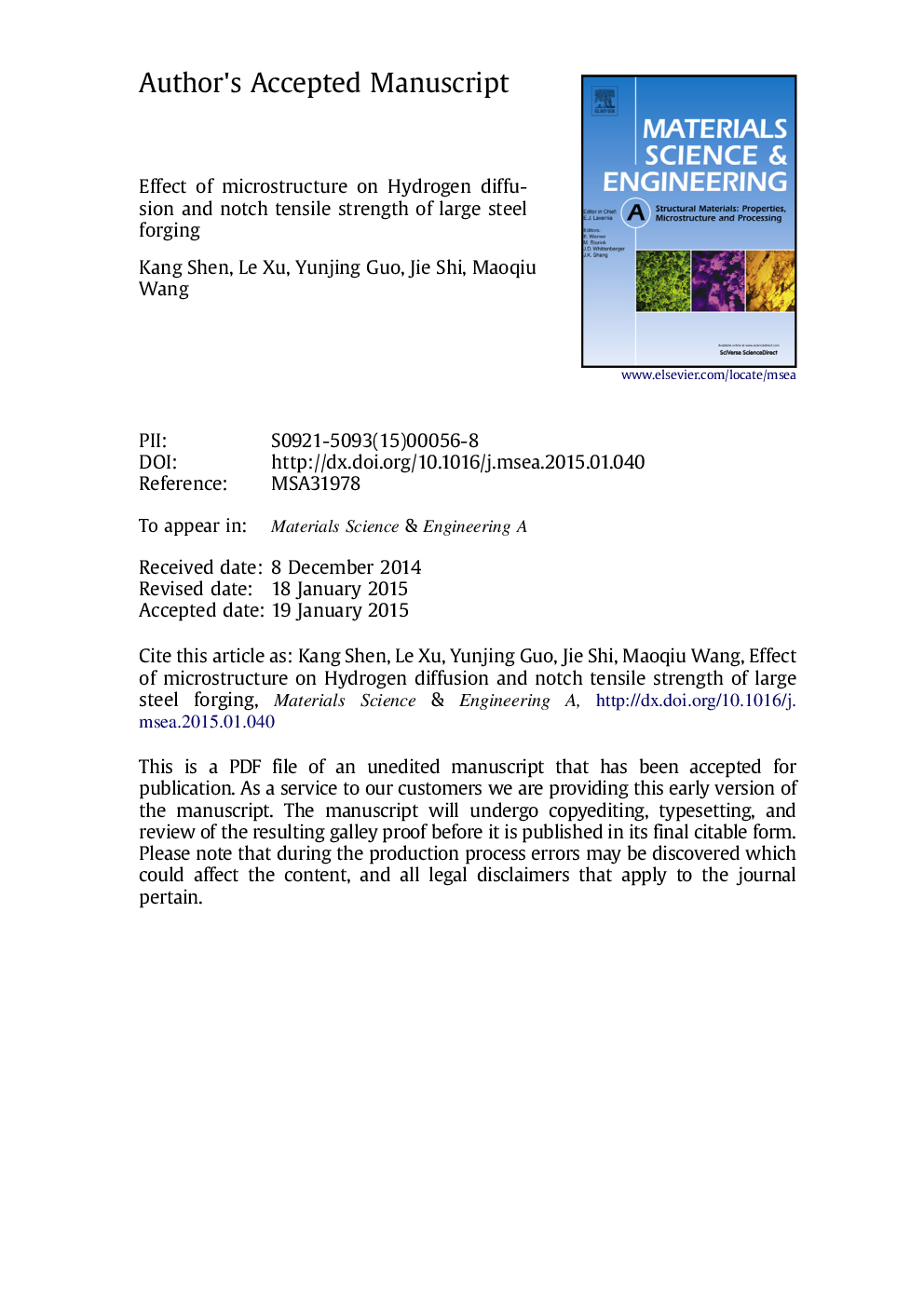| Article ID | Journal | Published Year | Pages | File Type |
|---|---|---|---|---|
| 7978359 | Materials Science and Engineering: A | 2015 | 10 Pages |
Abstract
Microstructure, hydrogen diffusion coefficient and notch tensile strength (NTS) in two different parts (1/2 radius and 3/4 radius) of a large steel forging have been investigated by means of microscopy, thermal desorption spectrometry (TDS), and slow strain rate tensile tests (SSRT), respectively. The microstructure in the 1/2R part is granular pearlite while that in the 3/4R part is composed of granular pearlite and bainite with many fine M23C6 carbides. Results of TDS analysis indicate that hydrogen content in the 3/4R part is much higher than in the 1/2R part, corresponding to a hydrogen diffusion coefficient about one order lower. SSRT results showed that although NTS decreased with the increase of hydrogen content in both parts, the 3/4R part showed a higher NTS at the same H content. The higher H content, lower H diffusion coefficient and higher NTS in the 3/4R part can be attributed to the fine M23C6 carbides which can act as hydrogen trapping sites.
Related Topics
Physical Sciences and Engineering
Materials Science
Materials Science (General)
Authors
Kang Shen, Le Xu, Yunjing Guo, Jie Shi, Maoqiu Wang,
